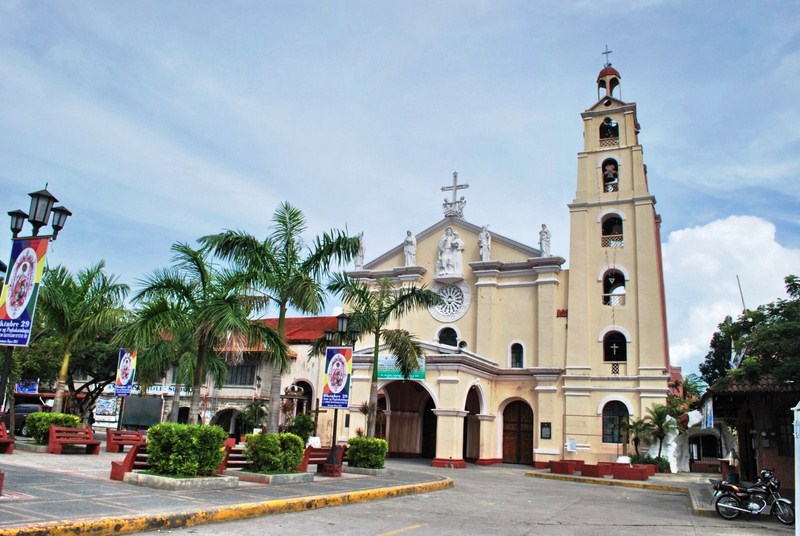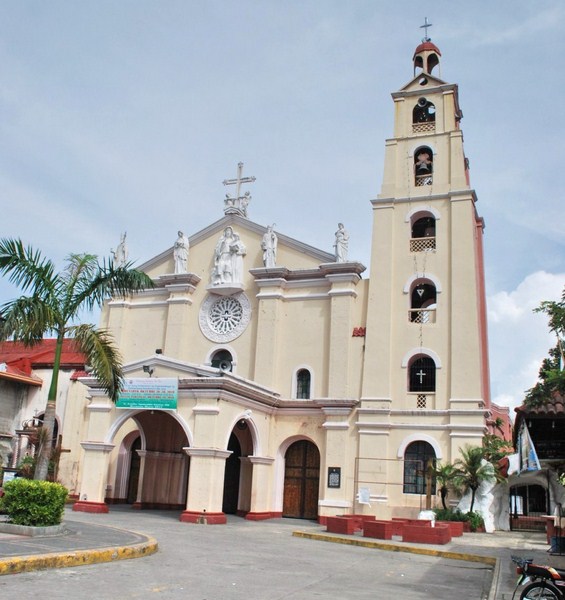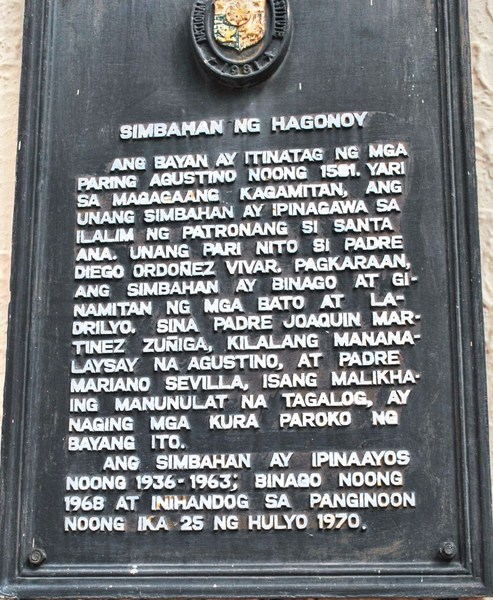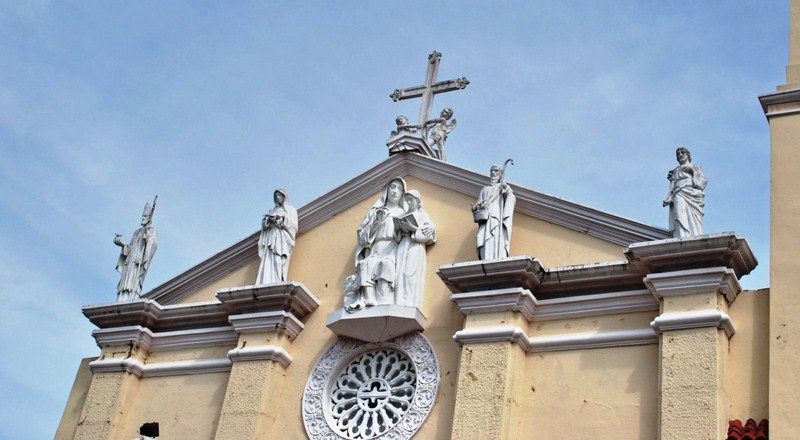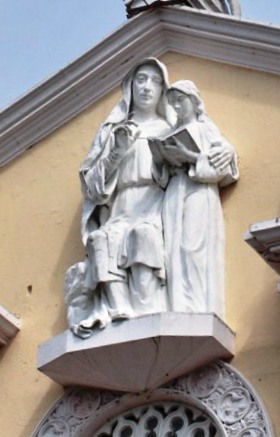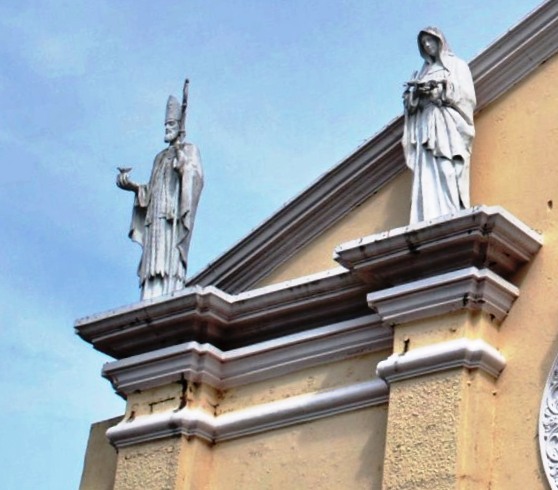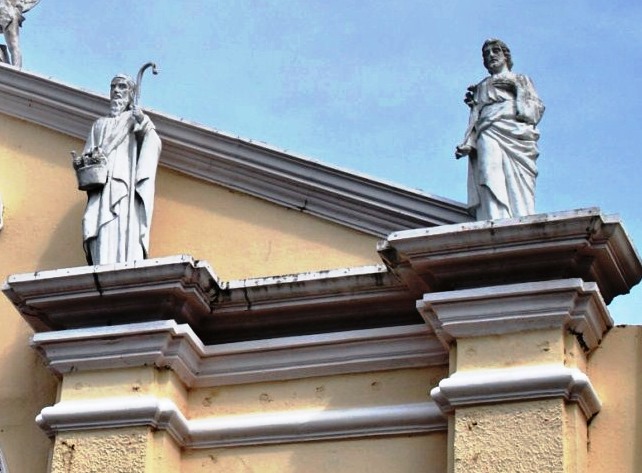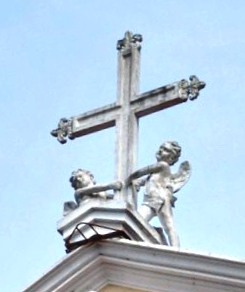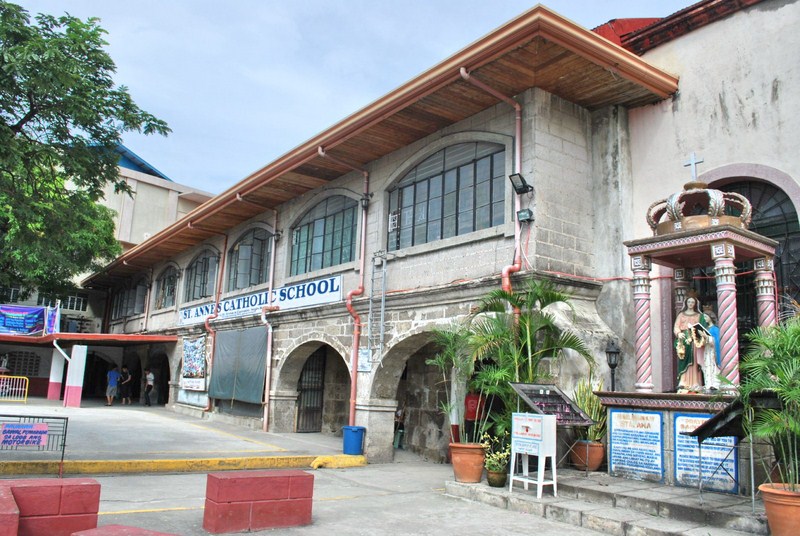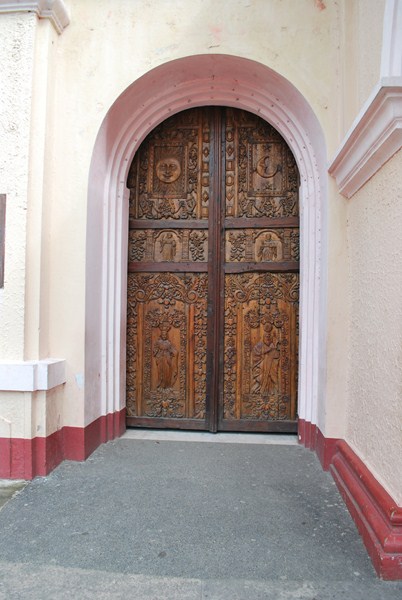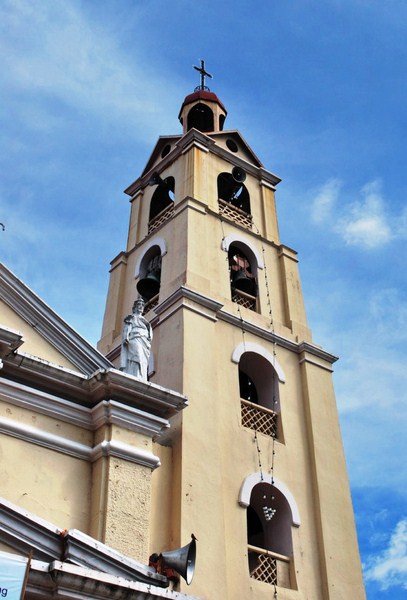From the basilica, we made a walking tour of the city’s Kamistisuhan Houses which are mostly located along Pariancillo St. These houses, built by landed Filipino-Chinese families, typify the intricate architectural design of Spanish buildings. When Pres. Emilio Aguinaldo moved the seat of government to Malolos, he established the various cabinet offices at these houses. Some of these houses are still inhabited by the descendants of the original owners and in a good state of preservation. Others have been demolished or have been converted to commercial establishments.
The beautifully restored Adriano-Vasquez Mansion, a perfect example of adaptive reuse, once housed Aguinaldo’s Gobierno Militar de la Plaza. Now the Meralco Bldg. (Meralco bought it in 1995 and restored it in 1997), it has a filigreed cast iron staircase that wind up to the balustered rampart.
.jpg) |
| The Adriano House |
.jpg) |
| The Bautista Caryatid House |
The Erastro Cervantes House, beside an old movie theater, once housed Aguinaldo’s Department of the Interior. The Arcadio Ejercito House housed Aguinaldo’s Department of War. The Lino Reyes House, across the side entrance of the cathedral, once housed Aguinaldo’s Secretaria de Exterior. Built by couple Lino and Maria Reyes probably after they were married in 1892, it was progressively renovated in the 1930s. The house has an octagonal rose window and a weather vane on top of the roof.
A sad case in point is the Ponciano Tiongson House which was demolished in the 1980s. Formerly located across the Erastro Cervantes House, it had intricate balustered windows and once served as Aguinaldo’s Commisaria de Guerra. An internet cafe now stands in its place.
 |
| The Hermogenes Reyes House |
Other ancestral houses were built during the early American era. The Hermogenes Reyes House, located a few blocks from the cathedral, was built in 1904 by couple Hermogenes and Teodora Reyes.
.jpg) |
| The gabled roof Lomotan House |
 |
| Dr. Luis Santos House |
Adriano-Vasquez Mansion: Pariancillo St., Malolos City, Bulacan.
Arcadio Ejercito House: cor. Estrella and Pariancillo Sts., Malolos City, Bulacan.
Bautista Caryatid House: Sto. Nino St., Malolos City, Bulacan
Erastro Cervantes House: Pariancillo St.,Malolos City, Bulacan.
Hermogenes Reyes House: F.T. Reyes St. (formerly Calle Electricidad), Brgy. Sto. Nino, Malolos City, Bulacan.
Lino Reyes House: Estrella St., Malolos City, Bulacan.
Lomotan House: Sto. Nino St., Malolos City, Bulacan

.jpg)
.jpg)
.jpg)
.jpg)

.jpg)
.jpg)
.jpg)
.jpg)
.jpg)
.jpg)
.jpg)
.jpg)
